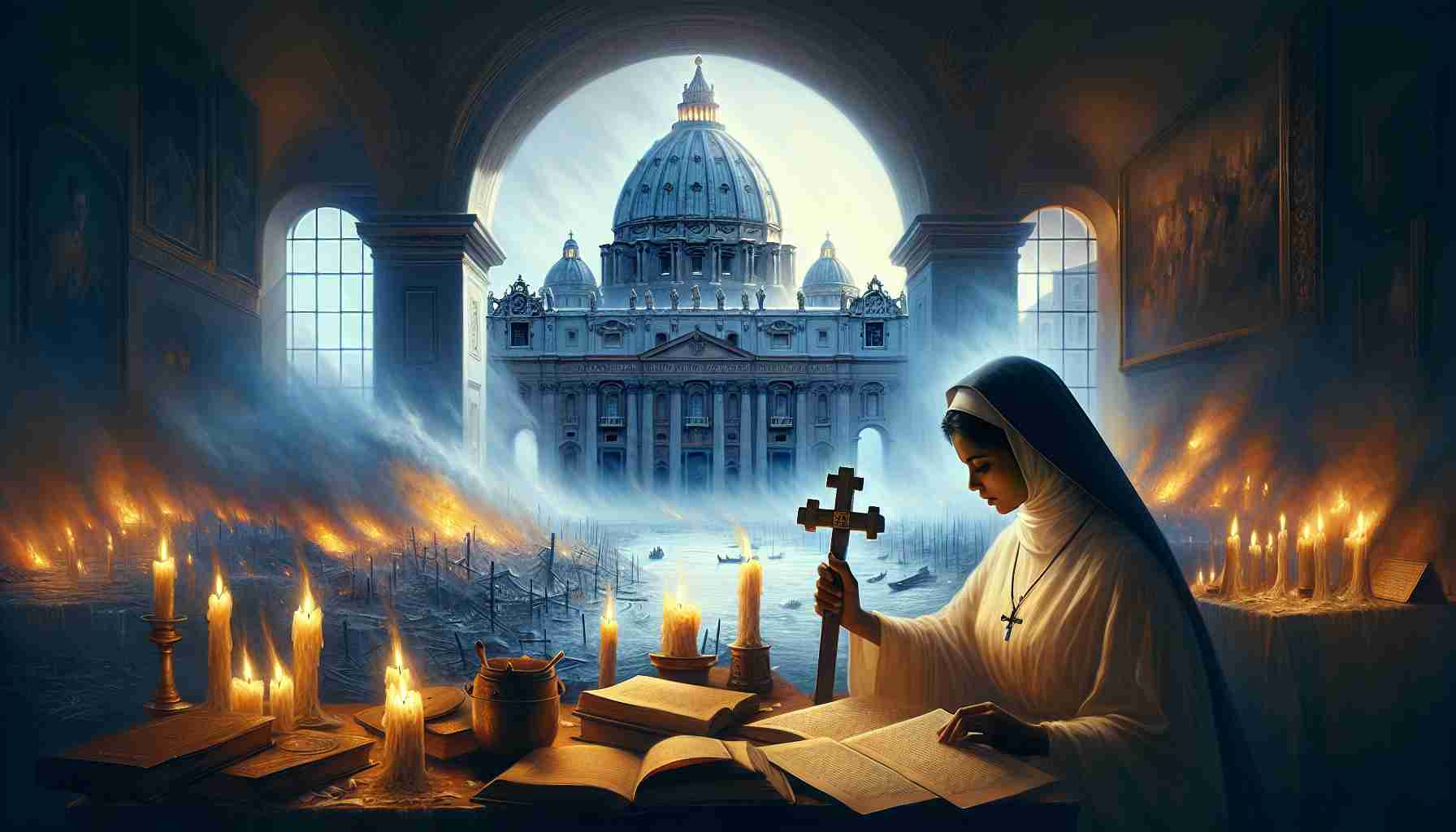

The rain had stopped just hours before dawn. In its place came fire.
A glow rose over the ancient Seven Hills, not of the morning sun, but of burning homes and holy places once thought untouchable. Rome—Sancta Roma—was awash in chaos. The Tiber groaned beneath drifting corpses. Ravaged frescoes wept paint down scorched convent walls. Choirs that once filled the heavens with song were silenced, their voices replaced with screams.
The soldiers, ragged, hungry, and bound by neither banner nor conscience, poured through the gates in furious waves. Landsknechts—German mercenaries reluctant servants of Charles V—driven mad by unpaid wages and promises of plunder, gorged themselves on the sacred city. Their leader, Charles III of Bourbon, lay cold and lifeless near the walls, felled early by a defender’s bullet. His death only unleashed the beast. His soldiers needed no orders.
Beneath Michelangelo’s rising dome in St. Peter’s Basilica, the bones of the Apostle trembled. Gold crucifixes were pried from altars. Relics stolen. Tabernacles smashed. One priest clutched the veil of a statue of the Virgin, whispering Psalm 46 through bloodied lips—“God is within her, she will not fall; God will help her at break of day.” But dawn delivered no reprieve.
Far from St. Peter’s, in a modest home layered with candle smoke and manuscripts, Sister Luciana held fast to a crude wooden cross. She had survived the night by concealing herself behind a false wall, one built by her father during an earlier Papal crisis. With each crash and footstep above, she pressed her head against the cracked stone and imagined her city not as it was—defiled—but as God once made it. Chosen. Loved. Eternal.
Her fingers trembled over Psalm 46, inked by candlelight in hurried Latin. Each word a stake against despair. “Though the earth give way and the mountains fall into the heart of the sea…”
Outside her walls, the Vatican Swiss Guard lay dead—nearly all 189 of them—having sealed the gate to the Passetto di Borgo to escort Pope Clement VII to Castel Sant’Angelo. The Holy Father, once seated in golden robes, had wept in silence behind fortressed walls, draped in the plain black of mourning. He would not forget the bodies of the faithful who died for him that day.
In the days that followed, Rome—the cradle of Christendom—groaned with death. Convents were turned into brothels. The Sistine Chapel, still wet with the genius of Michelangelo’s brush, echoed with drunken laughter as boots crushed shattered stained glass.
And yet, hidden beneath the desecration, faith endured.
Luciana emerged on the third morning. The air reeked of smoke and blood, but the rain began again, soft and clean. She ventured into the remains of the Church of San Lorenzo in Lucina. The altar was gone, the roof half-collapsed. But the crucifix still hung, scorched but intact. She fell to her knees, not in grief, but gratitude—her Savior had not fled. He had remained behind the smoke, present in suffering.
Others came—heretics and faithful, broken and bitter—to behold the wreckage. Some cursed the papacy, said the sack was divine judgment. Others wept for the house of God. And still, some, wounded but unshaken, began the work of rebuilding.
In secret apartments nestled inside Castel Sant’Angelo, Clement VII emerged weeks later. Humbled, his beard now long and white, he knelt before a small host used by prisoners for Mass. He had betrayed allies, failed the faithful, but in the ruins, he saw what human power could not complete. From this ruin, he would begin again. Not with walls, but with repentance.
Whispers of reform turned into plans—the Council of Trent, the Jesuit missions, the healing of Christendom’s torn heart. The Counter-Reformation would take hold not as vengeance but as witness.
Decades later, long after the fires had been doused and the rot cleaned from the basilicas, pilgrims returned to Rome. The scarred walls of churches bore silent testimony. Faith, like stone, had cracked—but had not collapsed.
Psalm 46 was etched into marble in a rebuilt chapel near the Vatican walls. Luciana’s own hand had copied it before her death into over one hundred volumes, each smuggled to distant monasteries. “God is within her,” the opening line read in every one. “She will not fall.”
Fifty years to the day of Rome’s humiliation, pilgrims knelt upon the worn stones of St. Peter’s, the basilica completed at last. The new bronze altar rose over Peter’s tomb, crowned by Bernini’s triumphant canopy of gold.
Wind stirred through the colonnade, and for a moment, it sounded like weeping—or perhaps a hymn.
Faith had survived the flames.
Not because it was strong, but because God was.